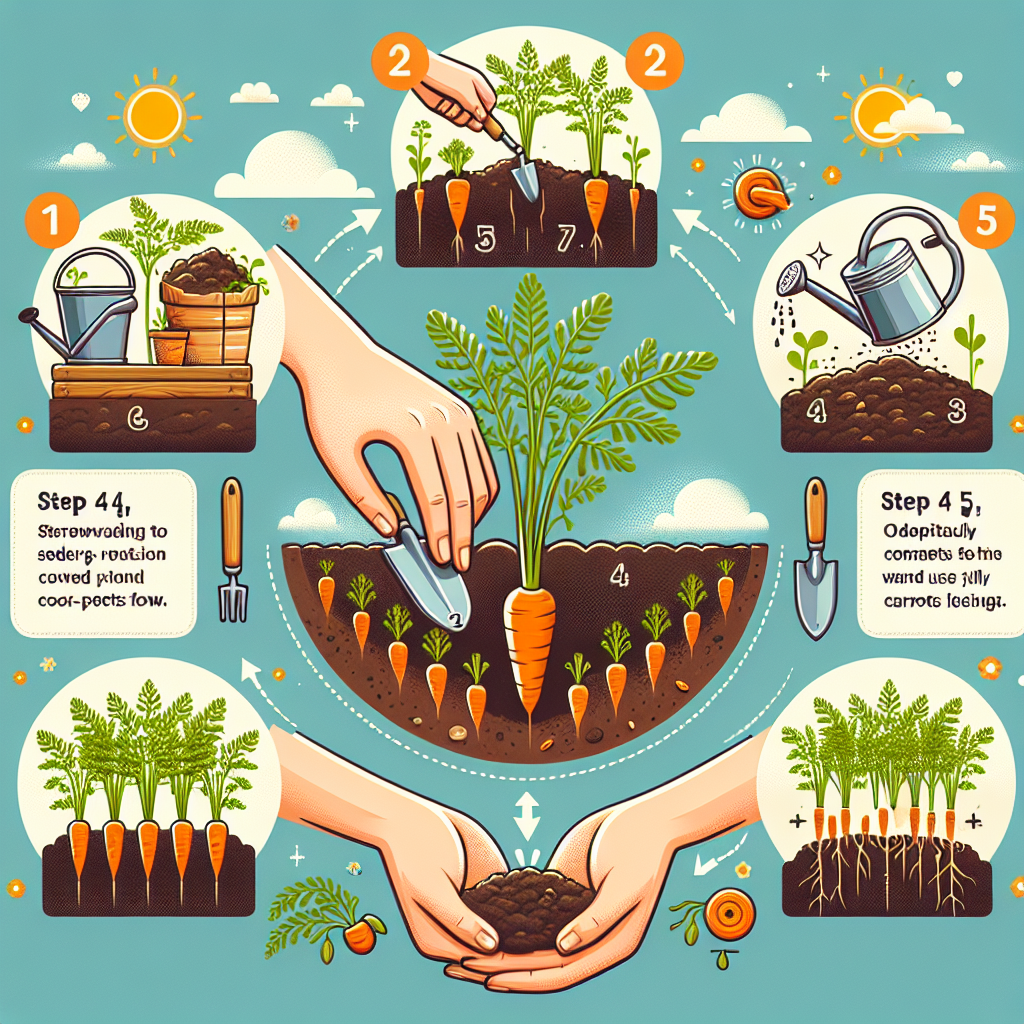
How to grow carrots successfully
How to Grow Carrots Successfully: A Comprehensive Guide
Carrots are a delightful and nutritious addition to any garden. Not only are they packed with vitamins and minerals, but they are also a versatile ingredient that can be used in various dishes. However, despite their popularity, many gardeners struggle with growing carrots. This article will provide you with essential tips and techniques to ensure that you can grow carrots successfully in your garden.
Understanding Carrot Varieties
Before diving into the practical aspects of carrot cultivation, it’s essential to understand the different types of carrots available. Each variety has specific characteristics that may affect how you grow them:
- Nantes Carrots: Sweet and crisp with a cylindrical shape, ideal for fresh eating.
- Imperator Carrots: Known for their long length and sweetness; these are commonly found in grocery stores.
- Chantenay Carrots: Short and stout, excellent for clay soils.
- Danvers Carrots: Good all-rounders with a strong flavor suitable for most soil types.
Preparing Your Soil
Soil quality is crucial for the successful growth of carrots. They thrive in loose, sandy loam that allows their roots to expand freely without obstruction. Here’s how to prepare your soil:
- Clear the Area: Remove any debris, rocks, and weeds from the planting area.
- Loosen the Soil: Use a garden fork or shovel to break up the soil to a depth of at least 12 inches.
- Add Organic Matter: Incorporate compost or well-rotted manure to improve soil structure and fertility.
- Test Soil pH: Carrots prefer a soil pH of 6.0 to 6.8. Amend your soil accordingly if necessary.
Choosing the Right Time to Plant
Timing your carrot planting is essential for success. Carrots are cool-season crops, meaning they prefer cooler temperatures for optimal growth. Here’s a general timeline:
- For spring planting, sow seeds about 2-4 weeks before your last expected frost date.
- For fall planting, sow seeds about 10-12 weeks before the first expected frost date.
Sowing Carrot Seeds
Proper sowing techniques can make a significant difference in your yield. Here’s a step-by-step guide on how to sow carrot seeds:
- Seed Selection: Choose high-quality seeds suited to your climate and soil conditions.
- Row Spacing: Create rows 12-18 inches apart to allow for easy access and adequate space for growth.
- Depth: Sow seeds about ¼ to ½ inch deep. Cover lightly and water gently.
- Thinning: Once seedlings emerge, thin them to about 2-4 inches apart to prevent overcrowding.
Caring for Your Carrots
Once you've sown your seeds, ongoing care is essential for healthy growth. Here are some tips on caring for your carrots:
Watering
Carrots need consistent moisture, especially in their early stages. Aim for the following:
- Water deeply at least once a week, allowing the top inch of soil to dry out between waterings.
- Avoid overhead watering; instead, use soaker hoses or drip irrigation to minimize weed growth and fungal diseases.
Fertilization
Carrots require less nitrogen than many leafy vegetables. Here’s how to fertilize them:
- Use a balanced fertilizer when preparing the soil.
- Avoid heavy applications of nitrogen, as this can cause forked roots.
Pest and Disease Management
Carrots can be affected by several pests and diseases. Proper monitoring and management techniques can mitigate these risks:
- Caterpillars: Handpick visible pests or use organic pesticides.
- Carrot Rust Fly: Use row covers to shield plants until harvest.
- Downy Mildew: Ensure good air circulation and avoid overhead watering.
Harvesting Carrots
Knowing when to harvest carrots is vital for their taste and texture. Here’s what to consider:
- Timing: Carrots are typically ready to harvest 60-80 days after sowing, depending on the variety.
- Size: Harvest when rooted carrots are about 1-2 inches in diameter.
- Digging: Carefully dig up carrots using a fork or spade to avoid damaging the roots.
Post-Harvest Care
After harvesting, proper storage and care will help to maximize the longevity of your harvested carrots:
- Remove excess soil without washing them to reduce moisture.
- Store in a cool, dark place, either in sawdust, sand, or a perforated plastic bag in the refrigerator.
Common Mistakes to Avoid
Many novice gardeners make mistakes when growing carrots. Here are some common errors to watch out for:
- Overwatering: This can lead to root rot and poor carrot development.
- Planting Too Close Together: This can stunt growth; ensure proper spacing.
- Neglecting Weeding: Weeds compete for nutrients and water, so keep the area weed-free.
Conclusion
“Growing carrots successfully requires patience, planning, and proper care. With these guidelines and tips, you can cultivate a bountiful harvest of delicious carrots.”
With dedication and the right knowledge, you can experience the satisfaction of growing carrots successfully. From selecting the right variety and preparing your soil to caring for your crops and harvesting them at the perfect time, each step plays a critical role in ensuring your success. Happy gardening!
By Guest, Published on September 29th, 2024